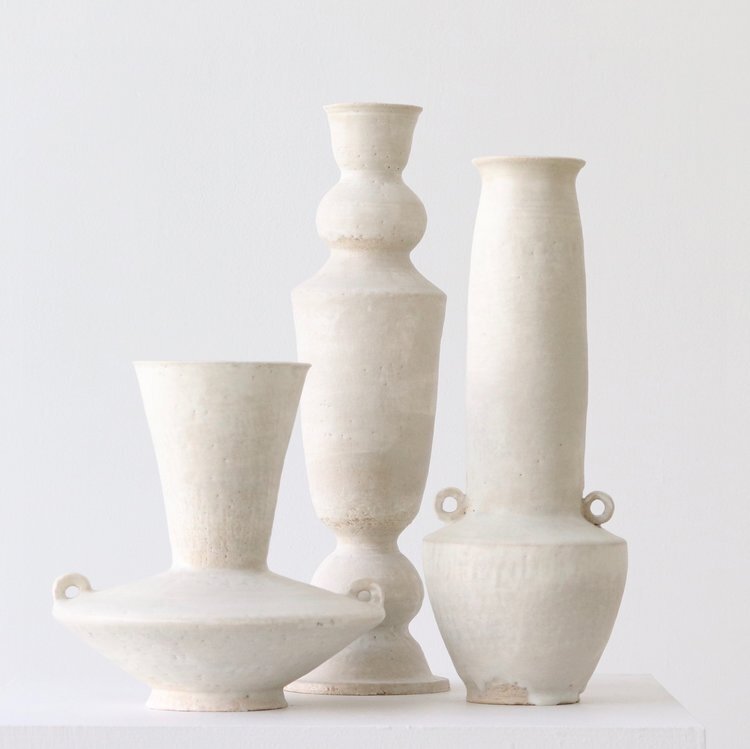
A collection of Kaplan’s vessels.
Image courtesy of: The London List
The beautiful hand-thrown lamps and objects that Danny Kaplan creates appear poetic. The studio inside a former bottling factory in Brooklyn is perfectly fitting for the designer who was raised in the South of France. Born in New York, it was only six years ago that he enrolled in an eight-week course at a pottery studio. Until this point, Kaplan had been working as a prop stylist. Just one year following his first class, the designer founded his own ceramic-lamp and tableware business.
The ceramist said (courtesy of an article by Alice Newell-Hanson for The New York Times Style Magazine), “With clay, you are trying to achieve perfection.” It is indeed perfection that is achieved within his 700-square-foot studio, a calming space with 12-foot-high wood-beamed ceilings.
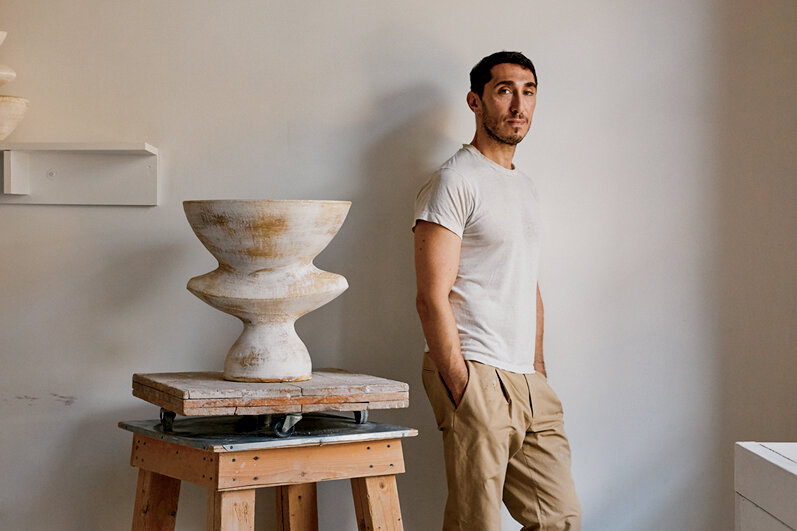
Kaplan standing beside his Wing side table and a pendant designed in collaboration with In Common With. This unique New York-based lighting studio partners with different makers around the world.
Image courtesy of: The New York Style Magazine, photographed by: Emiliano Granado
It is clear that his upbringing’s atmosphere of Provence left a lasting impression on Kaplan. He believes that his love for interiors and textiles began because of the colors, textures, and flavors reminiscent of where he grew up. In addition, it is from “home” that he developed a passion for the traditional pottery of Provence.
Kaplan studied creative writing, fine art, and art history at The New School and Parsons School of Design. The education he gained there, along with his memories of the places he visited throughout his youth inspired him tremendously. The artist explored the wheel-thrown and hand-built methods of ceramics. About why he loves pottery he says, “the pressure of a more subjective art form like painting. If I could make a bowl that functioned as a bowl, then I’d succeed.”
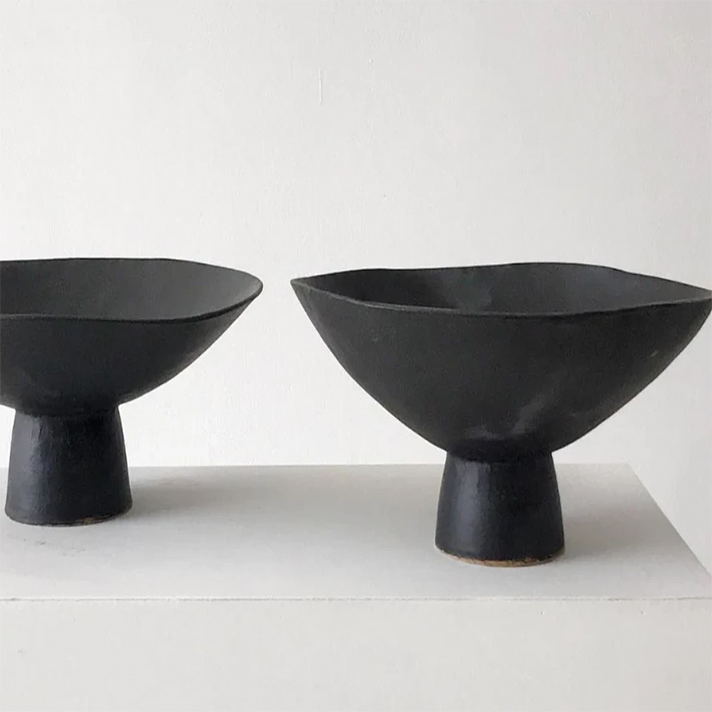
Black Low Footed Bowl.
Image courtesy of: Salt By The Casa Project
Kaplan’s lamps have developed a cult following of their own. Custom-ordered, the lamps arrive topped with a white or oatmeal linen shade. Depending on their placement, the lamps can look mid-century in design or primitive art in style. Kaplan’s pieces are now sold at a couple of the country’s most prestigious outfitters: ABC Carpet & Home in New York City and Lawson-Fenning in Los Angeles.
The ceramist uses traditional techniques to create his contemporary ceramics; for example, all of his pieces are wood-fired in Upstate New York. The one-of-a-kind lamps and vessels have a unique depth that is achieved through Kaplan’s continuous exploration of sculptural pieces that are intended for everyday use.
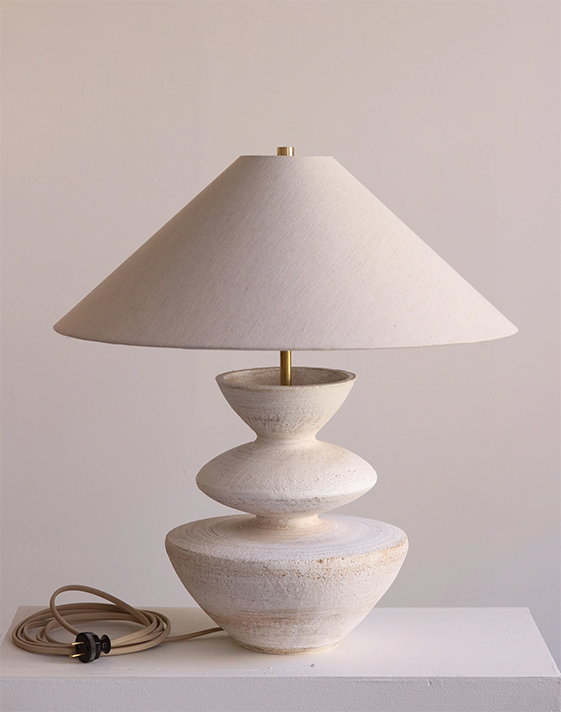
Jamus Lamp, available in a Textured Anthracite or Stone base with an oatmeal linen shade.
Image courtesy of: Lawson Fenning
Kaplan says that the most important piece he ever made was his first lamp. Since the first incarnation, the artist’s lamps have continued to evolve. Kaplan confirms this is why he loves the process of ceramics and designing handmade wares. He also loves being able to see the evolution and progression of his skills; in addition to how much his understanding of clay has grown as he’s gotten braver with his ideas. In such, each piece is a progression of the one prior.
Kaplan’s studio, which he chose because it is able to accommodate a kiln that is large enough to fire furniture pieces, is filled with beautiful pieces. Packed closely together on wide steel-frame shelves, a plethora of slightly varied versions of Kaplan’s prehistoric-looking table lamps patiently wait.
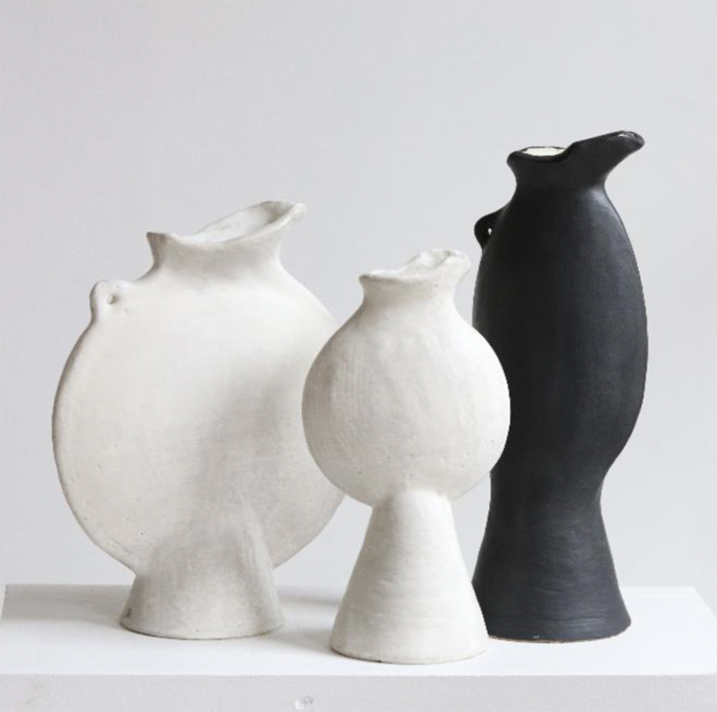
Olpe Vessel Collection available in three sizes: Small, Medium, and Large. The vessels are available in either textured Anthracite or Stone.
Image courtesy of: Canvas
Kaplan also makes long-necked vases with squat bases that resemble urns, shallow-footed dishes, and now… furniture. This new collection is partially made on the wheel and partially made by hand from sculpture clay. Regardless, the items are all a play on the same basic form. Each piece has a smooth finish and is produced by a layer of porcelain in either a bone white or soft coal glaze.
Potters have been making the same forms since the craft began. Kaplan says “There really aren’t that many shapes. I just use them in different ways.” Perhaps the artist is paying homage to his predecessors and those he has been inspired by. Regardless of the reason, it is clear that Kaplan is on a lifelong journey to blend beauty and utility into his work.